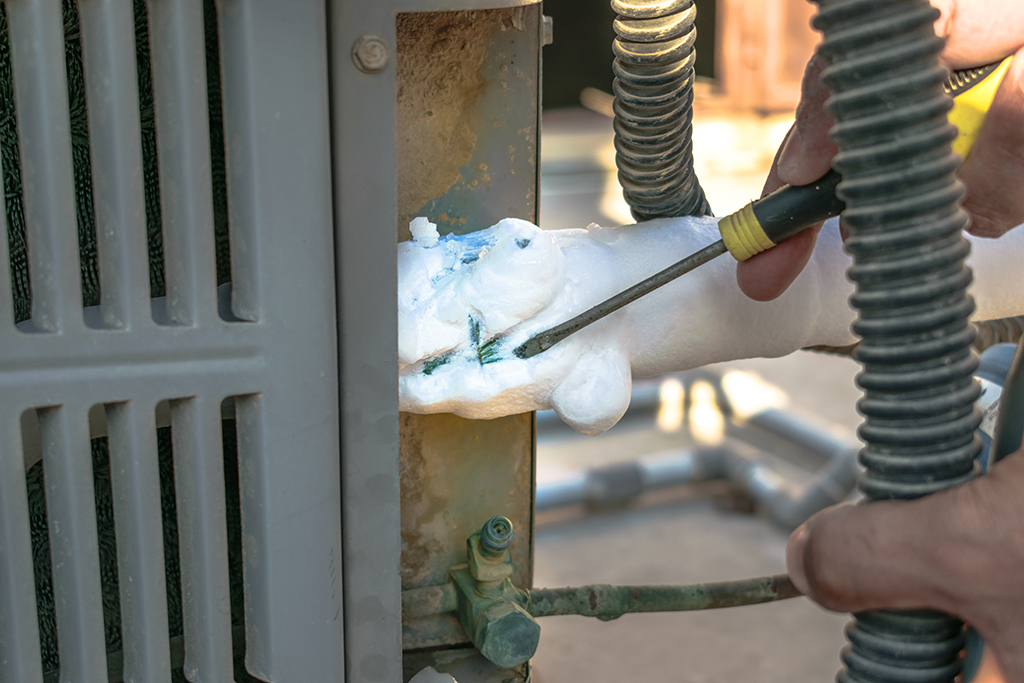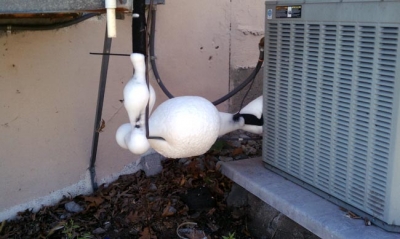How to Handle a Frozen AC Pipe - Essential Measures for Restoration
How to Handle a Frozen AC Pipe - Essential Measures for Restoration
Blog Article
The author is making a few great points on Air Conditioner Frozen? How To Fix your Frozen AC Line as a whole in the content following next.

Introduction
Discovering that your AC pipe is iced up can be worrying, particularly during hot summer months when you rely on your air conditioning system the most. Comprehending what to do in such a scenario is essential to prevent more damage to your cooling system and ensure your convenience inside.
Understanding the Causes
A number of elements can contribute to the cold of an AC pipeline. Recognizing these reasons can aid you resolve the problem properly.
Lack of Airflow
One common reason for a frozen AC pipeline is inadequate airflow. When the airflow over the evaporator coil is limited, it can trigger the coil to go down below freezing temperature level, causing ice formation on the pipe.
Low Refrigerant Levels
Insufficient refrigerant degrees in your AC system can also lead to a frozen pipeline. Reduced refrigerant degrees can create the stress in the system to drop, causing the cold of dampness on the evaporator coil.
Cold Weather Conditions
In cooler climates, freezing temperature levels outside can contribute to the cold of a/c pipes. If your air conditioning system is not effectively shielded or if there are leakages in the ductwork, cold air can infiltrate the system, causing the pipeline to freeze.
Dirty Air Filters
Dirty or clogged up air filters can limit air movement in your a/c system, bring about various problems, including an icy pipe. It's essential to change or cleanse your air filterings system routinely to make certain appropriate air movement and stop ice accumulation.
Indications of a Frozen Air Conditioning Pipe
Identifying the indicators of a frozen air conditioning pipe is important for timely activity.
Reduced Airflow
If you discover a significant decline in air flow from your vents, it could indicate an icy pipe.
Ice Buildup on the Pipe
Noticeable ice accumulation on the refrigerant line or the evaporator coil is a clear indicator of an icy AC pipeline.
Odd Sounds from the Unit
Uncommon sounds, such as hissing or gurgling, coming from your a/c device can signal that there's ice present on the pipe.
Immediate Actions to Take
When confronted with an icy a/c pipeline, it's important to act promptly to stop further damage to your air conditioning system.
Turning off the air conditioning
The primary step is to turn off your ac unit to stop the system from running and intensifying the issue.
Checking for Blockages
Check the location around the indoor system for any blockages that may be blocking airflow, such as furnishings or curtains.
Thawing the Pipe
You can use mild approaches like placing towels soaked in cozy water around the frozen pipe to help thaw it gradually.
Preventive Measures
Taking safety nets can aid prevent future events of a frozen air conditioning pipe.
Normal Maintenance Checks
Arrange regular maintenance contact a professional HVAC professional to make sure that your a/c system is running efficiently.
Transforming Air Filters
Frequently change or cleanse your air filters to prevent airflow limitations and preserve optimum efficiency.
Shielding Exposed Pipes
If your AC pipes are exposed to cold temperatures, consider insulating them to prevent freezing throughout winter months.
Looking For Professional Help
If DIY approaches fail to resolve the concern or if you're uncertain about just how to continue, it's best to look for aid from a qualified HVAC professional.
When DIY Methods Fail
If your efforts to thaw the pipeline or address other problems are unsuccessful, it's time to hire a specialist.
Significance of Hiring a Professional HVAC Technician
A qualified HVAC specialist has the know-how and devices required to detect and repair problems with your AC system safely and effectively.
Final thought
Dealing with an icy air conditioner pipe can be an aggravating experience, yet knowing how to respond can help decrease damages and recover comfort to your home. By understanding the causes, acknowledging the indications, and taking prompt activity, you can properly attend to the issue and prevent future incidents.
Frozen AC Line: Why It Happens & What To Do About It
A frozen AC line can be a rather peculiar sight in a place like Phoenix, Arizona where nothing ever freezes. In this post, we’ll discuss what makes an air conditioner line frozen – and what you can do about it.
Dirty Air Filters
Did you know that you should be cleaning or replacing your air filters on a monthly basis? Failing to do this can result in airflow issues that, in turn, cause your evaporator coils and lines to freeze over. You’ll notice a buildup of ice on both components, although the buildup on your pipes will, of course, be more evident unless you open your air condition up to reveal the coils.
What To Do About It
Give your air filter a good cleaning if it’s reusable. If not, replace the filter outright. Next, switch your air conditioner’s fan setting on and leave it there for 2-3 hours. This will draw warm air in, helping to thaw your evaporator coil. You can also check out this article for some tips on cleaning the coils themselves if you’d like to speed the process up. Before you switch the unit back to its normal state, make sure the supply vents are completely unobstructed and free of dust or other debris.
If you keep having this issue even after replacing your filters regularly, contact a local HVAC repair company and have them inspect your evaporator coil, ductwork, and any other components that may be at fault. If you live in the Phoenix, Arizona area, give American Home Water and Air a call.
Low Refrigerant Levels/Leakage
What To Do About It
Contrary to what air conditioner “recharge” companies often tell their clients about refrigerant, it should never need to be simply refilled. You see, refrigerant runs in what experts refer to as a “closed loop.” Refrigerant really shouldn’t be leaving that loop. If it is, you’ve got a leak.
Paying someone to come and pump more refrigerant into your system (aka “recharge” it) isn’t the solution. Doing that will simply kick the can down the road. Besides, refrigerant leaks can be harmful to the environment and people in your home.
Rather, you need to take care of the leak with the help of a technician. Check out this article for some more information about dealing with air conditioners that are leaking refrigerant. Before you contact a technician, switch your thermostat to the off position. Then, switch the fan setting on and let it run for 2-3 hours so the unit can thaw.
Improper Temperature Setting
Improper temperature settings can also cause a drop in your air conditioner’s pressure. What many people don’t realize is that air conditioners are actually designed to run when temperatures have fallen above roughly 60 degrees Fahrenheit. If you run the unit when it’s cold outside, you’ll run into many issues, including frozen components.

Hopefully you enjoyed our post about Why Is Ice On My Outside Air Conditione. Many thanks for spending some time to read through our piece of content. You should take a moment to promote this blog if you appreciated it. Thank you for going through it.
Click Here Report this page